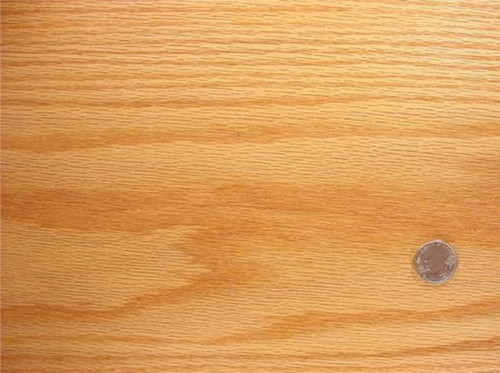Product Description
LUMBER SURFACED ON 4 SIDES TO SIZES SHOWN + or - 1/4Common Name(s): Southern Red Oak, Spanish Oak Scientific Name: Quercus falcata
Distribution: Southeastern United States
Tree Size: 80-100 ft (25-30 m) tall, 3-5 ft (1-1.5 m) trunk diameter
Average Dried Weight: 42 lbs/ft3 (675 kg/m3)
Specific Gravity (Basic, 12% MC): .52, .68
Janka Hardness: 1,060 lbf (4,720 N)
Modulus of Rupture: 12,040 lbf/in2 (83.0 MPa)
Elastic Modulus: 1,480,000 lbf/in2 (10.20 GPa)
Crushing Strength: 6,090 lbf/in2 (42.0 MPa)
Shrinkage:Radial: 4.7%, Tangential: 11.3%, Volumetric: 16.1%, T/R Ratio: 2.4
Color/Appearance: Has a light to medium reddish-brown color, though there can be a fair amount of variation in color. Conversely, White Oak tends to be slightly more olive-colored, but is by no means a reliable method of determining the type of oak.
Grain/Texture: Has medium-to-large pores and a fairly coarse grain.
Rot Resistance: Red oaks such as Southern Red Oak do not have the level of decay and rot resistance that White Oaks possess. Durability should be considered minimal.
Workability: Easy to glue, and takes stain and finishes very well.
Odor: Has a tell-tale smell that is common to most oaks. Most find it appealing.
Allergies/Toxicity: Although severe reactions are quite uncommon, oak has been reported as a sensitizer. Usually most common reactions simply include eye and skin irritation, as well as asthma-like symptoms. See the articles Wood Allergies and Toxicity and Wood Dust Safety for more information.
Pricing/Availability: Slightly less expensive than White Oak, Red Oak is in good/sustainable supply and is moderately priced. Thicker 8/4 planks, or quartersawn boards are slightly more expensive per board foot.
Sustainability: This wood species is not listed in the CITES Appendices or on the IUCN Red List of Threatened Species.
Common Uses: Cabinetry, furniture, interior trim, flooring, and veneer.
Comments: Southern Red Oak falls into the red oak group, and shares many of the same traits as Red Oak (Quercus rubra). It’s considered to be somewhat inferior to Northern Red Oak (Quercus rubra), and the mechanical data listed above corroborates this notion.
Product Videos
Custom Field
Product Reviews
2 Reviews Hide Reviews Show Reviews
-
1/2 oak boards
Great quality smooth finish perfect for diy projects
-
1/2 oak boards
a couple were slightly bended but able to fix them otherwise fantastic quality nice smooth grain, square edges etc








